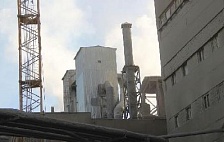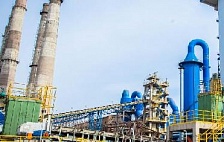22.11.2019 18:43
Moscow Waste Management Operator Will Use Municipal Waste to Fuel Cement Plants
A major Moscow waste management operator MGS Group has agreed to supply briquettes of recycled municipal waste to fuel cement kilns of LafargeHolcim’s Ferzikovsky cement plant. The operator believes sorting, briquetting and sending waste to the plant is cheaper than hauling it to landfills.
MGS Group manages 5% of waste in Moscow with the share of managed waste in the two largest districts of Moscow (Novomoskovsky Administrative Okrug and Troitsky Administrative Okrug) being 70%. The company plans to reach a 20% share (1.3 million tpa) in city waste management in two years.
MGS Group now intends to produce 36,000 tpa of briquetted fuel, and increase the output up to 500,000 tpa in the future. The group will invest around 700 million rubles to create the municipal waste processing facilities.
Municipal waste fuel is called Refuse Derived Fuel (RDF). Household organic waste, rubber, paper, wood, cardboard, leather, synthetic fibers, textiles, plastic, and polymers are used to produce RDF. Glass, metals, stones, and chlorine-containing materials are not suitable for RDF.
The founder of MGS Group Georgy Malyutin says RDF production is more profitable than waste disposal, which costs at least 1,200 rubles per ton. By his calculations, about 40% of municipal waste can be processed into fuel for cement kilns.
The waste management operator agreed to provide LafargeHolcim with briquettes for its Russian plant virtually free of charge — 1 ruble per ton. The company plans to similarly supplies enterprises of Eurocement holding and Asia Cement plant.
LafargeHolcim will use RDF at a cement plant in the village of Ferzikovo, Kaluga Region. This enterprise remains the only one in the country with a specialized alternative fuel facility. The facility is operational since 2015, and LafargeHolcim emphasizes that waste incineration occurs without ash formation. A temperature of up to 2000 °C in the combustion zone coupled with an oxidizing atmosphere destroy persistent organic compounds. The ash residue reacts with the raw material and forms clinker directly in the kiln.
Soyuzcement claims this to be a common global practice: in the developed countries of Europe, such plants use up to 70–80% of municipal waste, and the US has this number at around 75%.
MGS Group manages 5% of waste in Moscow with the share of managed waste in the two largest districts of Moscow (Novomoskovsky Administrative Okrug and Troitsky Administrative Okrug) being 70%. The company plans to reach a 20% share (1.3 million tpa) in city waste management in two years.
MGS Group now intends to produce 36,000 tpa of briquetted fuel, and increase the output up to 500,000 tpa in the future. The group will invest around 700 million rubles to create the municipal waste processing facilities.
Municipal waste fuel is called Refuse Derived Fuel (RDF). Household organic waste, rubber, paper, wood, cardboard, leather, synthetic fibers, textiles, plastic, and polymers are used to produce RDF. Glass, metals, stones, and chlorine-containing materials are not suitable for RDF.
The founder of MGS Group Georgy Malyutin says RDF production is more profitable than waste disposal, which costs at least 1,200 rubles per ton. By his calculations, about 40% of municipal waste can be processed into fuel for cement kilns.
The waste management operator agreed to provide LafargeHolcim with briquettes for its Russian plant virtually free of charge — 1 ruble per ton. The company plans to similarly supplies enterprises of Eurocement holding and Asia Cement plant.
LafargeHolcim will use RDF at a cement plant in the village of Ferzikovo, Kaluga Region. This enterprise remains the only one in the country with a specialized alternative fuel facility. The facility is operational since 2015, and LafargeHolcim emphasizes that waste incineration occurs without ash formation. A temperature of up to 2000 °C in the combustion zone coupled with an oxidizing atmosphere destroy persistent organic compounds. The ash residue reacts with the raw material and forms clinker directly in the kiln.
Soyuzcement claims this to be a common global practice: in the developed countries of Europe, such plants use up to 70–80% of municipal waste, and the US has this number at around 75%.
The use of materials published on the site is allowed only with the reference to the source (the journal «Cement and its application») and a hyperlink to the quoted material.
Share:





